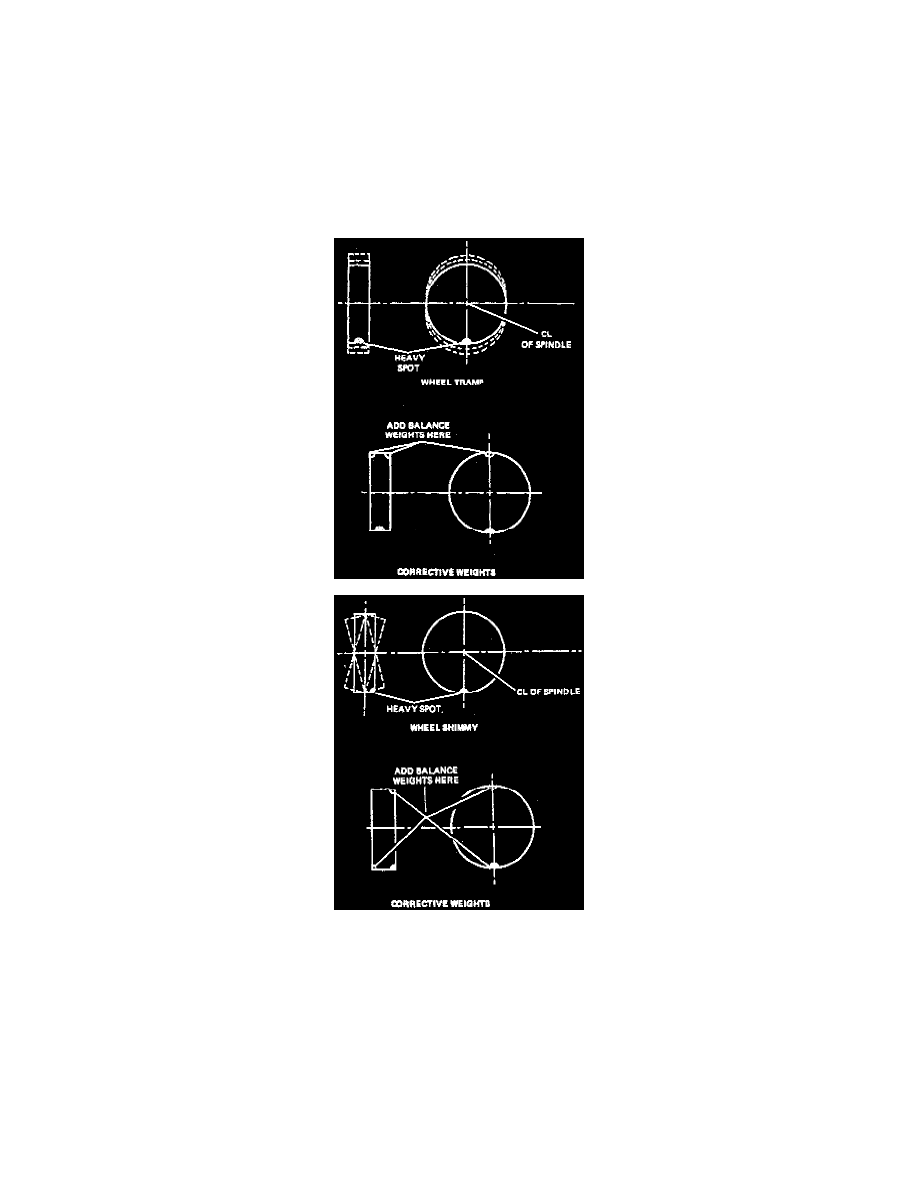Malibu V6-191 3.1L VIN M SFI (1997)

Wheels: Service and Repair
Balancing Tire and Wheel
General Balance Precautions
Deposits of foreign material must be cleaned from the inside of the wheel. When balancing aluminum and composite wheels, the balancer pressure cup
should have a protective plastic or rubber edge on it to avoid damaging the rim surface finish. Stones should be removed from the tread in order to avoid
operator injury during spin balancing and to obtain a good balance. The tire should be inspected for any damage, then balanced according to the
equipment manufacturer's recommendations.
General Information
There are two types of tire and wheel balancing, static and dynamic. Static balance is the equal distribution of weight around the wheel. Assemblies that
are statically unbalanced cause a bouncing action called wheel tramp. This condition may eventually cause uneven tire wear.
Dynamic balance is the equal distribution of weight on each side of the centerline so that when the assembly spins there is no tendency for it to move
from side to side. Assemblies that are dynamically unbalanced may cause wheel shimmy.
Off-Vehicle Balancing
Wheel balancing should be performed using an electronic off-vehicle balancer. They are easy to use and give both a static and a dynamic balance.
Although they do not correct for drum or rotor unbalance as does on-vehicle spin balancing, this is overcome by their accuracy (usually to within 1/8
ounce). When balancing off-vehicle, the wheel should locate on the balancer with a cone through the back side of the center pilot hole (not by the wheel
stud holes).
